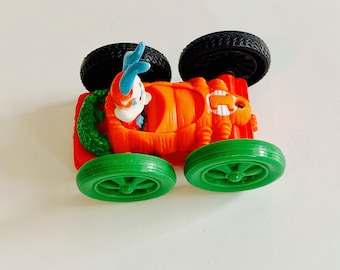
Design & Prototyping: Initial designs are created using CAD software, followed by prototyping to ensure accuracy.
Molding: High-quality molds are made, often from steel, to cast the vehicle parts.
Casting: Diecasting involves injecting molten metal (usually zinc or aluminum) into the molds.
Assembly: The cast parts are cleaned, polished, and assembled, including detailed components like wheels and interiors.
Painting & Finishing: Vehicles are painted with multiple layers for durability and aesthetics. Decals and details are added.
Quality Control: Each piece undergoes thorough inspection to meet quality standards.
Personality Development
Patience & Precision: Building and collecting diecast models require attention to detail and patience.
Creative Thinking: Designing and customizing models fosters creativity.
Technical Skills: Understanding the mechanics and design enhances technical knowledge.
Historical Knowledge: Collecting vintage models can increase knowledge of automotive history.
Types
Scale Models: Common scales include 1:18, 1:24, 1:43, and 1:64.
Construction Vehicles: Bulldozers, cranes, and excavators.
Military Vehicles: Tanks, jeeps, and aircraft.
Racing Cars: Formula 1, NASCAR, and rally cars.
Classic Cars: Vintage models from various eras.
Trucks & Trailers: Semi-trucks, fire trucks, and delivery vans.
Care
Cleaning: Regular dusting and gentle cleaning with a soft cloth.
Storage: Keep in a cool, dry place, preferably in display cases.
Handling: Handle with clean hands to avoid fingerprints and oils.
Maintenance: Periodically check for loose parts and fix them promptly.
Good Side
Educational Value: Enhances learning about engineering, design, and history.
Hobbyist Community: Provides a sense of community among collectors and enthusiasts.
Investment Potential: Rare models can appreciate in value.
Artistic Expression: Customization allows for creative expression.
Bad Side
Cost: High-quality models can be expensive.
Fragility: Detailed parts can be delicate and prone to breaking.
Space: Collecting can require significant display and storage space.
Maintenance: Requires regular upkeep to preserve condition.
Making
Pattern Cutting: Creating precise patterns for molds.
Material Selection: Choosing durable metals like zinc or aluminum.
Detailing: Adding fine details to enhance realism.
Assembly: Combining parts with accuracy and care.
Material Choice
Metals: Zinc, aluminum, and sometimes plastic for certain parts.
Paint: High-quality, non-toxic paints for durability and safety.
Rubber: Used for tires to add realism.
Plastic: For interior details and smaller components.
Fashion & Design
Realism: High demand for accurate, realistic models.
Customization: Trends in customizing models to reflect personal taste.
Vintage Revival: Nostalgic designs of classic vehicles.
Limited Editions: Popular for collectors, often with unique features.
Trending
Electric Vehicles: Models of contemporary electric cars and hybrids.
Smart Features: Integration of electronic features like lights and sounds.
Movie Tie-Ins: Vehicles from popular films and TV shows.
Sustainable Materials: Increasing use of eco-friendly materials.
Market
Collectors: A significant portion of the market consists of avid collectors.
Children: Diecast vehicles remain popular toys for children.
Gifts: Often purchased as gifts for various occasions.
Hobby Stores: Specialty stores and online platforms are primary sales channels.
Customer Preferences
Detail & Accuracy: High value placed on realistic details.
Brand Loyalty: Preference for well-known brands like Hot Wheels, Matchbox, and Maisto.
Variety: Desire for a wide range of vehicles, from classic cars to modern sports cars.
Price Sensitivity: Varies, with some willing to pay premium prices for limited editions and rare models.
